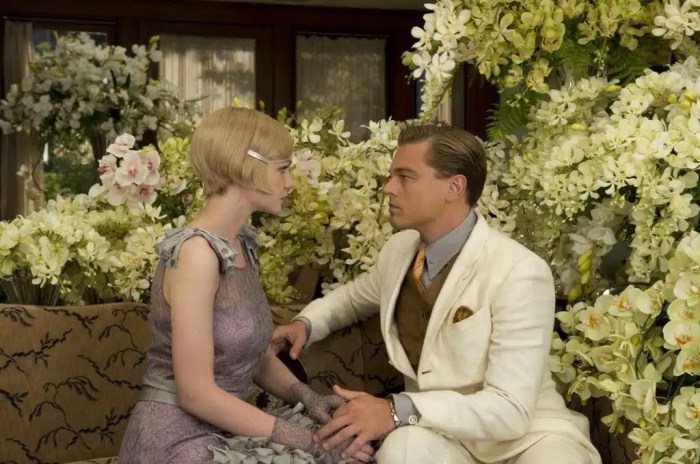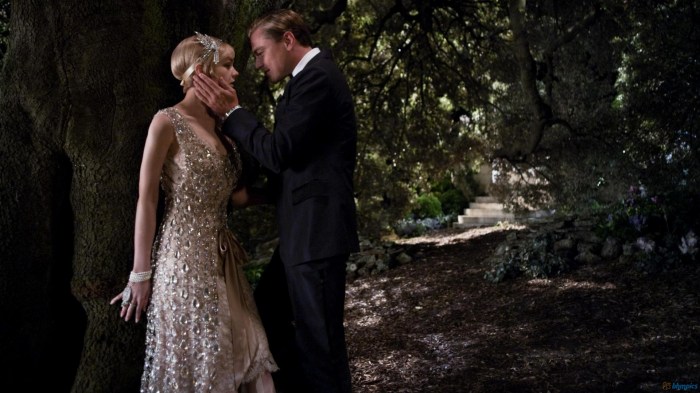Questions for Chapter 5 of The Great Gatsby invite readers to delve into the intricate tapestry of symbolism, themes, and character development that Fitzgerald masterfully weaves in this pivotal chapter. From the enigmatic green light to the complexities of Daisy and Gatsby’s relationship, Chapter 5 offers a treasure trove of insights into the novel’s enduring themes and characters.
As we navigate the events and characters of Chapter 5, we will explore the significance of Gatsby’s past and its shaping influence on his character, analyze the motivations and desires that drive Daisy, and unravel the intricate dynamics between Tom and Daisy.
Character Analysis: Questions For Chapter 5 Of The Great Gatsby

The characters in The Great Gatsbyare complex and multifaceted, each with their own motivations, desires, and flaws. Understanding these characters is essential to comprehending the novel’s themes and symbolism.
Gatsby’s Past and its Impact
Gatsby’s past, shrouded in mystery, significantly shapes his character. His humble beginnings as James Gatz and his relentless pursuit of wealth and status are driven by a desire to recreate a lost love. His obsession with Daisy, a woman from his past, fuels his lavish lifestyle and ultimately leads to his downfall.
Daisy’s Motivations and Desires
Daisy Buchanan is a beautiful and enigmatic character whose motivations and desires are often elusive. She is torn between her love for Gatsby and her loyalty to Tom, her wealthy but abusive husband. Daisy’s longing for a life of romance and excitement clashes with her desire for stability and security.
Tom and Daisy’s Relationship
Tom and Daisy’s relationship is a complex and destructive one. Tom is a wealthy and arrogant man who treats Daisy with disdain. Daisy, in turn, is attracted to Tom’s power and status but is also repelled by his cruelty. Their marriage is a loveless and toxic one that ultimately ends in tragedy.
Symbolism and Motifs
The Great Gatsbyis rich in symbolism and motifs that enhance the novel’s themes and provide deeper insights into the characters and their experiences.
The Green Light
The green light at the end of Daisy’s dock is a powerful symbol of Gatsby’s hope and longing. It represents his dream of recapturing the past and winning back Daisy’s love. The green light is both alluring and elusive, symbolizing the unattainability of Gatsby’s dreams.
The Valley of Ashes
The Valley of Ashes is a desolate and polluted area between West Egg and New York City. It represents the moral decay and corruption that exists beneath the surface of the Roaring Twenties. The valley is a reminder of the human cost of the American Dream and the destructive nature of wealth.
Wealth and Corruption
Wealth is a recurring motif in The Great Gatsby, and it often has a corrupting influence on the characters. Gatsby’s relentless pursuit of wealth is driven by his desire to impress Daisy, but it ultimately leads to his downfall. Tom and Daisy’s wealth allows them to live a life of privilege, but it also isolates them from the consequences of their actions.
Themes and Literary Devices

The Great Gatsbyexplores a range of themes and employs various literary devices to convey its message and create a lasting impact on readers.
The American Dream
The American Dream is a central theme in The Great Gatsby. Gatsby’s pursuit of wealth and status is driven by his belief in the promise of the American Dream. However, the novel ultimately shows that the American Dream is often unattainable and that the pursuit of it can lead to tragedy.
Foreshadowing and Irony, Questions for chapter 5 of the great gatsby
Fitzgerald uses foreshadowing and irony throughout the novel to create a sense of suspense and foreshadow Gatsby’s tragic end. For example, the death of Myrtle Wilson foreshadows Gatsby’s own death, and the green light at the end of Daisy’s dock is a constant reminder of Gatsby’s unattainable dream.
Flashbacks
Fitzgerald uses flashbacks to reveal Gatsby’s past and provide insights into his motivations and desires. These flashbacks help to flesh out Gatsby’s character and make him a more sympathetic figure. They also contribute to the novel’s complex and layered structure.
Historical and Cultural Context

The Great Gatsbyis set during the Roaring Twenties, a time of economic prosperity and social change. Understanding the historical and cultural context of the novel is essential to fully appreciate its themes and characters.
The Roaring Twenties
The Roaring Twenties was a period of economic boom and social change in the United States. The stock market soared, and people spent lavishly on consumer goods. However, the decade was also marked by social unrest and a rise in crime and violence.
Cultural Values and Social Norms
The cultural values and social norms of the Roaring Twenties are reflected in the characters and events of The Great Gatsby. The novel depicts a society that is obsessed with wealth and status, and where women are often treated as second-class citizens.
Gender and Race
Gender and race play important roles in The Great Gatsby. Women are often objectified and marginalized, and people of color are often treated with prejudice and discrimination. The novel’s exploration of these issues provides a powerful critique of the social inequalities of the Roaring Twenties.
Style and Language
Fitzgerald’s writing style in The Great Gatsbyis characterized by its vivid imagery, lyrical prose, and evocative use of language.
Imagery and Sensory Details
Fitzgerald uses vivid imagery and sensory details to create a rich and immersive experience for the reader. His descriptions of Gatsby’s mansion, the Valley of Ashes, and the New York City skyline are particularly memorable.
Lyrical Prose
Fitzgerald’s prose is often lyrical and poetic. He uses beautiful language to evoke the beauty and tragedy of the Roaring Twenties. The novel’s opening line, “In my younger and more vulnerable years my father gave me some advice that I’ve been turning over in my mind ever since,” is a perfect example of Fitzgerald’s lyrical style.
Comparison to Modernist Literature
The Great Gatsbyis considered a masterpiece of modernist literature. It shares many of the characteristics of other modernist works, such as its fragmented structure, its use of stream-of-consciousness narration, and its exploration of the dark side of the American Dream.
Top FAQs
What is the significance of the green light at the end of Daisy’s dock?
The green light symbolizes Gatsby’s hope and longing for Daisy, representing his unwavering belief in the possibility of recapturing their past love.
How does Gatsby’s past shape his character?
Gatsby’s humble beginnings and his desire to reinvent himself drive his relentless pursuit of wealth and status, ultimately shaping his enigmatic and complex character.
What are Daisy’s motivations and desires?
Daisy is torn between her desire for stability and security with Tom and her lingering feelings for Gatsby, reflecting the complexities of her character and the societal pressures she faces.